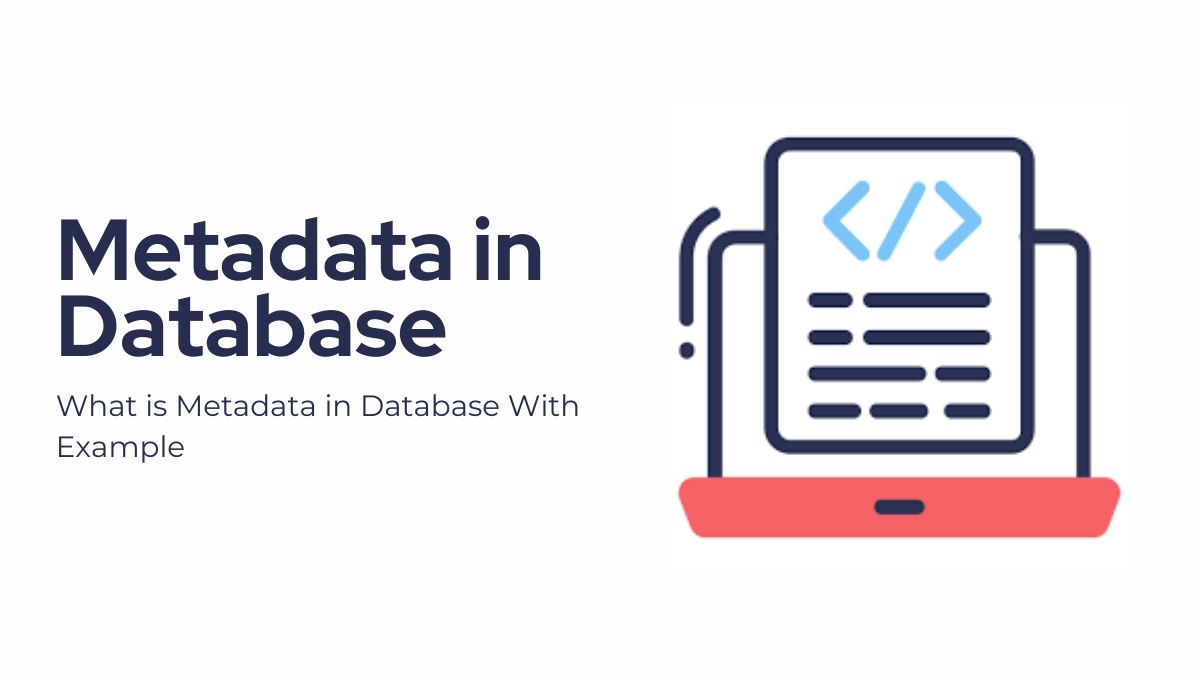
In databases, the term “metadata” is frequently used. But what exactly does this mean? How does it work within a database? This guide covers metadata in databases. It will explain its importance and give examples. They will help you understand its role and use.
What is Metadata?
Metadata is often referred to as “data about data.” It is the information that gives context, structure, and meaning to the primary data in a database. Metadata helps users and systems understand and use data. It is stored in databases.
Types of Metadata
Metadata can be divided into several types, each serving a distinct purpose:
- Descriptive Metadata: Describes the data’s content and context. It makes the data easier to find and identify. For example, in a library database, the metadata for a book would include the title, author, and summary.
- Structural Metadata: Describes the data’s structure. It shows how different pieces of data interact. For example, in a database table, structural metadata has the table name. It also has column names, data types, and indexes.
- Administrative Metadata: Examples include access rights, creation dates, and modification dates. They are administrative metadata. This type of metadata contributes to data governance and compliance.
- Statistical Metadata: Describes data’s statistical properties. It covers distributions, mean, median, and standard deviation. This is critical for data analysis and reporting.
Why is Metadata Important?
Metadata is crucial in database management and usage. Here are some main reasons why metadata is important:
- Data Discovery: Metadata helps users find data. It provides descriptions of data sets.
- Data Understanding: It helps you understand the meaning and structure of the data.
- Data Management: Metadata helps organize data. It also ensures its integrity and security.
- Data Integration: When combining data from many sources, metadata helps map and align data.
- Data Analysis: Metadata supports data analysis by providing necessary context and structural information about the data.
Examples of Metadata in Databases
To illustrate the concept of metadata, let’s consider a few practical examples:
Example 1: Metadata in a Relational Database
Imagine a relational database for an online bookstore. Here’s what the metadata might look like:
Descriptive Metadata:
- Table: Books
- Column: Title (Description: Title of the book)
- Column: Author (Description: Author of the book)
- Column: ISBN (Description: International Standard Book Number)
Structural Metadata:
- Table: Books
- Columns: Title (VARCHAR), Author (VARCHAR), ISBN (VARCHAR), PublishedDate (DATE), Price (DECIMAL)
- Primary Key: ISBN
- Indexes: Author_Index (on Author)
Administrative Metadata:
- Table: Books
- CreatedBy: Admin
- CreatedDate: 2022-01-15
- LastModifiedBy: Editor
- LastModifiedDate: 2023-05-10
- AccessRights: Read/Write for Admin, Read for User
Try the fileproinfo.com online tool to edit aLL file metadata online & free.
Example 2: Metadata in a Data Warehouse
In a data warehouse, metadata is critical. It helps understand complex data structures and changes. Consider a sales data warehouse:
Descriptive Metadata:
- Table: Sales
- Column: SaleID (Description: Unique identifier for each sale)
- Column: ProductID (Description: Identifier for the product sold)
- Column: CustomerID (Description: Identifier for the customer)
- Column: SaleDate (Description: Date of the sale)
- Column: SaleAmount (Description: Total amount of the sale)
Structural Metadata:
- Table: Sales
- Columns: SaleID (INTEGER), ProductID (INTEGER), CustomerID (INTEGER), SaleDate (DATE), SaleAmount (DECIMAL)
- Primary Key: SaleID
- Foreign Keys: ProductID (references Products.ProductID), CustomerID (references Customers.CustomerID)
- Indexes: SaleDate_Index (on SaleDate)
Administrative Metadata:
- Table: Sales
- DataSource: OnlineSalesSystem
- ETLProcess: DailyBatchJob
- LastETLRun: 2024-06-02 23:59:59
- DataSteward: DataAdmin
- RetentionPolicy: 5 years
Example 3: Metadata in a NoSQL Database
For a NoSQL database like MongoDB, metadata also plays a vital role. Consider a collection of user profiles:
Descriptive Metadata:
- Collection: UserProfiles
- Field: _id (Description: Unique identifier for each user)
- Field: name (Description: Full name of the user)
- Field: email (Description: Email address of the user)
- Field: signupDate (Description: Date when the user signed up)
Structural Metadata:
- Collection: UserProfiles
- Fields: _id (ObjectId), name (String), email (String), signupDate (Date)
- Indexes: email_1 (on email)
Administrative Metadata:
- Collection: UserProfiles
- CreatedBy: UserService
- LastModifiedBy: ProfileUpdater
- LastModifiedDate: 2024-05-30
- AccessRights: Read/Write for Admin, Read for User
Conclusion
Metadata is vital for databases. It provides key details. These details improve data usability, management, and integration. Organizations can improve their data governance. They can also streamline data management processes and enable more insightful data analysis. They can do this by understanding and using metadata well. You may work with relational databases, data warehouses, or NoSQL databases. Knowing the value of metadata is key. Using it well can greatly improve your data operations and decision-making.